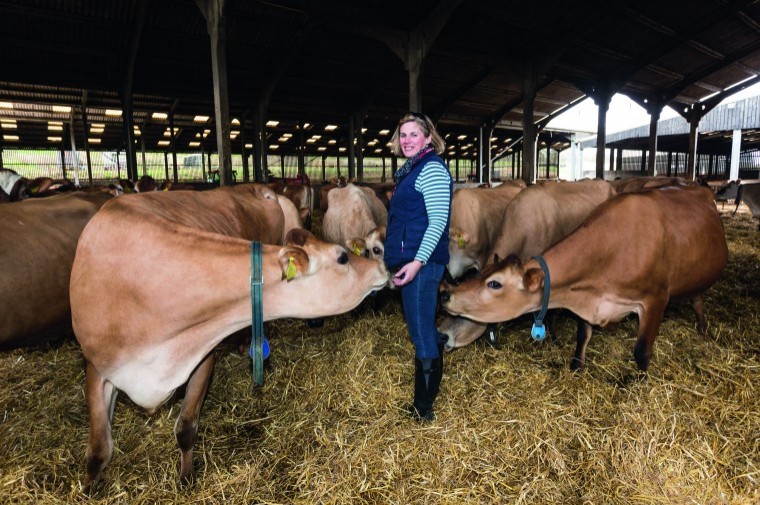My workload has increased back up to full capacity with the dreaded school run and trying to cram a week’s worth of work into a day.
I feel incredibly privileged to have spent the past year at home with all four children. When they all disappeared off to school aged five, I never imagined in my wildest dreams that I would have the opportunity of home schooling and enjoying their company. I am very aware that we have lost some friends and family close to our hearts throughout this pandemic and our thoughts and prayers are with them.
Silaging will soon be upon us and turnout is imminent. Lambing time has now arrived and they seem to be appearing thick and fast. So far it would seem trouble free, but who knows what will be lurking behind closed doors! Having the cows calve all year round doesn’t seem a formidable task, but lambing sheep all at once seems like a never-ending task.
Modern farming is a complex, unpredictable and individual business. Farmers must meet the changing needs of our planet and the expectations of regulators, consumers, food processors and retailers alike. Farmers are coming under increased pressures from climate change, soil erosion and biodiversity loss and from consumers’ changing tastes in food and the way in which it is produced.
Plant-based food is becoming more popular, but consumers are ill advised as to the sustainability of this food. Dairy farmers are being told to reduce the amount of palm oil and soya used in feed, due to claims of deforestation, but palm oil is used in the production of pizza, cake, chocolate, biscuits, margarine, cosmetics, soap, shampoo, cleaning products etc. Half of all products sold in a supermarket contain palm oil.
It would appear that the more you eco-logicise the planet the less food you grow, the more houses you build the less land you farm, and the greener the energy you produce the less food you grow. We must find a middle way in which we can be environmentally friendly and continue with the original purpose of agriculture…to produce food and feed a nation. This now appears to be becoming increasingly unbalanced.
As demand rises, global milk production is increasing and the UK dairy industry is having to manage that rising demand. Plant-based milk alternatives have become very popular in the UK over the past decade, although milk drinkers are a very loyal bunch, judging by a recent report. It reveals that 87% of dairy customers still drink cow’s milk, while 94% buy cheese and 78% yoghurt or crème fraiche.
The growth in volume poses challenges for suppliers and producers alike. Their margins are squeezed to the limit by powerful customers like supermarkets, who use dairy products as a loss leader to entice the general public into their stores. In 1995 there were 35,741 dairy farmers in the UK, in 2019 there were 12,209, with a further reduction of 400 in 2020. This is a 67% reduction. If farmers keep leaving the industry at this speed, by 2030 we won’t have any dairy farmers in the UK.
Did you know?
- That 70% more food will be needed to feed a growing population by 2050.
- That 80% of food produced in the developing world is produced by smallholders.
- That 700% higher crop yields are produced in North America than in sub-Saharan Africa.
- That 180,000 people leave rural communities every day to live in cities.
- That only 12% of the world’s land can be used for farming.
- That 70% of the world’s water is used for farming.
- That farming generates 12% of greenhouse emissions every year.
We have to find a balance in food production. If we continue along this trajectory we run the risk of having lots of wild flowers, bugs and badgers but no food. A dilemma I don’t wish to have.




